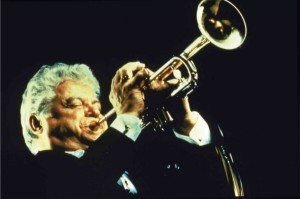
Some players focus entirely too much on developing ‘high chops’. Other fundamental aspects of brass playing, like musicality and tone quality can suffer as a result.
While that is true, it is my strong feeling that if you want to make it in the world of music as a competent brasshole, then you’ll have to have some range in your pocket. Of course, you can’t let this get in the way of the rest of your playing qualities.
I’ve developed some solid philosophies that I’ll share today about achieving range without having to sacrifice tone quality, flex-ability & endurance. As always, I recommend Dr. James Thompson’s “Buzzing Book“ for daily practice to achieve the best range, endurance, and tone quality.
1. Shhhhhhhh…practice softly
Learning to play clearly and with quality articulations at a soft dynamic is one of the most frustrating but necessary trials that a trumpet player must endure. I recommend taking any solos, etudes, or technical studies that you’re working on and try playing them as softly as possible. Next, focus on range extension exercises, always keeping in mind the philosophy that you don’t have to play as loud as you are thinking that you have to. This will not only save your endurance, but allow your ‘chops’ to get to the right position. Trust me, power comes later. Focus on achieving intonation and tone quality during your range practice.
2. Rest, rest, and more rest
Take a break there, Superchops! Even the best trumpeters break this cardinal rule of practice: brass players need rest! Although not always practical advice, try and follow this guideline whenever possible: rest as much as you play. As an example: if an etude lasts 2min. 45sec. then you should rest for an equal 2min. and 45sec. when you finish before moving onto the next routine or going back to cover rough passages. Find creative ways to immerse yourself in trumpet culture during your rests. Come up with an interesting score to follow or read some articles like this one, but please, give those chops a rest!
3. Relax, you’ll breath deeper
This tip might sound obvious but the truth is that we could all learn to relax more and breath deeper as brass players. A slow, deep, relaxed breath will be the best source of the air you’ll need to get up above a written high C on command. The air stream that you release through your axe should be as warm and slow as possible at any given dynamic. Efficiency is paramount. Learn to expel your air stream as slowly as possible throughout your entire dynamic range from triple forte all the way down to triple piano. When you breath before a phrase, think of the air filling your lungs from the bottom up as if it was water pouring into a pitcher, then as you exhale release your air stream more slowly from the top of your ‘pitcher of air’. You’ll be able to put a sizzle on the air stream for those high notes and you’ll be surprised by the increased control. Feel the difference!
More Resources for Playing High Notes
I’ve used a few methods extensively but there are two in particular that I found to be helpful, unique in presentation, and easy to understand.
Playing Lead Trumpet by Wayne Bergeron
The first is Playing Lead Trumpet by Wayne Bergeron. Mr. Bergeron is a fantastic lead trumpet player (Gordon Goodwin’s Big Phat Big Band) and trumpet recording artist with some great solo albums as well. The guy can really scream and his insight into playing musically in the high register is important to consider.
The Buzzing Book by Dr. James Thompson
I use The Buzzing Book during almost every practice routine and I always recommend the method to trumpet students. I’ve written a post about The Buzzing Book, check it out if you’re not convinced. I think that The Buzzing Book is the best method to use for increasing trumpet range and endurance while enhancing tone quality.
